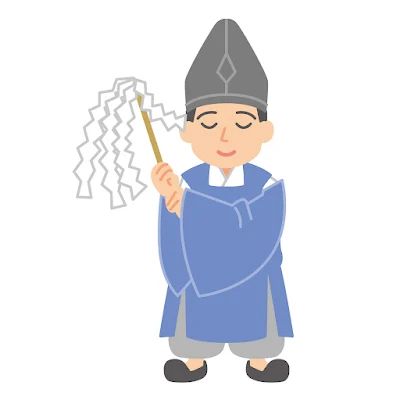
In the realm of Shintoism, a vast and ancient belief system deeply rooted in Japanese culture, the practice of Harae holds a significant place.
Harae, also known as "the great purification," is a sacred ritual that aims to cleanse individuals, spaces, and even objects of impurities and negative energies.
This centuries-old tradition is steeped in rich symbolism and serves as a gateway to connect with divine forces.
In this article, we will delve into the profound meaning, purpose, and history of Harae, exploring its significance in the context of Shintoism.
{tocify} $title={Table of Contents}
Origins and Significance
"Harae" purpose is to purify individuals and spaces by removing impurities and sins.
This practice is central to Shintoism, emphasizing purity and harmony to connect with the divine and cleanse personal and societal transgressions.
The Essence of Harae
Harae embodies the act of purifying oneself or others through spiritual incantations and ritualistic practices.
The core purpose of Harae is to remove sins, impurities, and calamities, creating a space of spiritual clarity and sanctity.
The Fundamental Philosophy
At the heart of Shintoism lies the belief that achieving a pure and harmonious state of being is essential for connecting with the divine.
Harae is a profound expression of this philosophy, as it seeks to establish a sacred environment, free from impurities, where individuals can establish a genuine communion with the gods.
It aims to cleanse not only the personal impurities of individuals but also the collective transgressions of society as a whole.
The Ritual of Harae
Harae is a multifaceted ritual that encompasses various practices, prayers, and symbolic gestures.
It is predominantly performed by Shinto priests, who have undergone rigorous training and possess deep knowledge of the ancient rituals.
The process involves reciting sacred prayers, waving a Harae-gushi (a symbolic wand made of sacred grass or paper), and sometimes even the sprinkling of saltwater to purify the space and participants.
Types of Harae
Harae plays a crucial role in maintaining harmony with the divine and nature, purifying the body, mind, and spirit, and ensuring the well-being of both individuals and the community.
Two notable forms of Harae include Misogi, which involves immersion in cold water for purification, and Oharae, a grand-scale purification performed twice a year by Shinto priests to cleanse the entire community.
Misogi: The Water Purification
Misogi, a form of Harae, is a cleansing ritual that involves immersing oneself in cold water to wash away impurities.
This practice is often performed in natural bodies of water, such as rivers or waterfalls, where the pure and flowing water is believed to possess divine properties.
Misogi is a deeply spiritual and physical experience, symbolizing the renewal of body and soul.
Oharae: The Grand Purification
Oharae, also known as the Grand Purification, is a significant annual event held twice a year, on the last day of June and December.
During this ritual, Shinto priests gather to perform Oharae no Kotoba, cleansing themselves and the entire community of impurities and negative energies.
Oharae is a powerful ceremony that reinforces the connection between individuals, the divine, and the natural world.
The Role of Harae in Shintoism
The Role of Harae in Shintoism is multifaceted, encompassing spiritual connection and empowerment, community harmony and renewal, as well as protection from calamities and negative influences.
Spiritual Connection and Empowerment
Harae serves as a conduit for individuals to establish a strong spiritual connection with the divine forces and the kami (gods) of Shintoism.
By purifying themselves and their surroundings, individuals can elevate their spiritual state and invite the blessings of the gods into their lives.
Harae empowers individuals to take control of their spiritual well-being and encourages a deeper understanding of their place within the larger cosmic order.
Community Harmony and Renewal
Harae also plays a vital role in fostering community harmony and renewal.
By collectively participating in Harae rituals, communities can purify themselves of shared transgressions and negative energies, promoting unity, forgiveness, and a sense of collective responsibility.
Harae acts as a catalyst for social cohesion and emphasizes the importance of shared spiritual practices.
Protection and Warding off Calamities
Another significant aspect of Harae is its role in protecting individuals, communities, and spaces from calamities and negative influences.
By purifying the environment and individuals, Harae is believed to create a shield against evil spirits, misfortune, and other malevolent forces.
It instills a sense of security and peace, allowing individuals to navigate life's challenges with a greater sense of resilience.
Conclusion
Harae, the sacred ritual of purification in Shintoism, holds immense cultural and spiritual significance in Japan.
Through its various forms and practices, Harae enables individuals to cleanse themselves of impurities, establish a profound connection with the divine, and foster community harmony.
This ancient tradition continues to thrive as a vibrant expression of Japan's rich spiritual heritage, reminding us of the importance of spiritual cleanliness and the pursuit of a harmonious existence.

Post a Comment